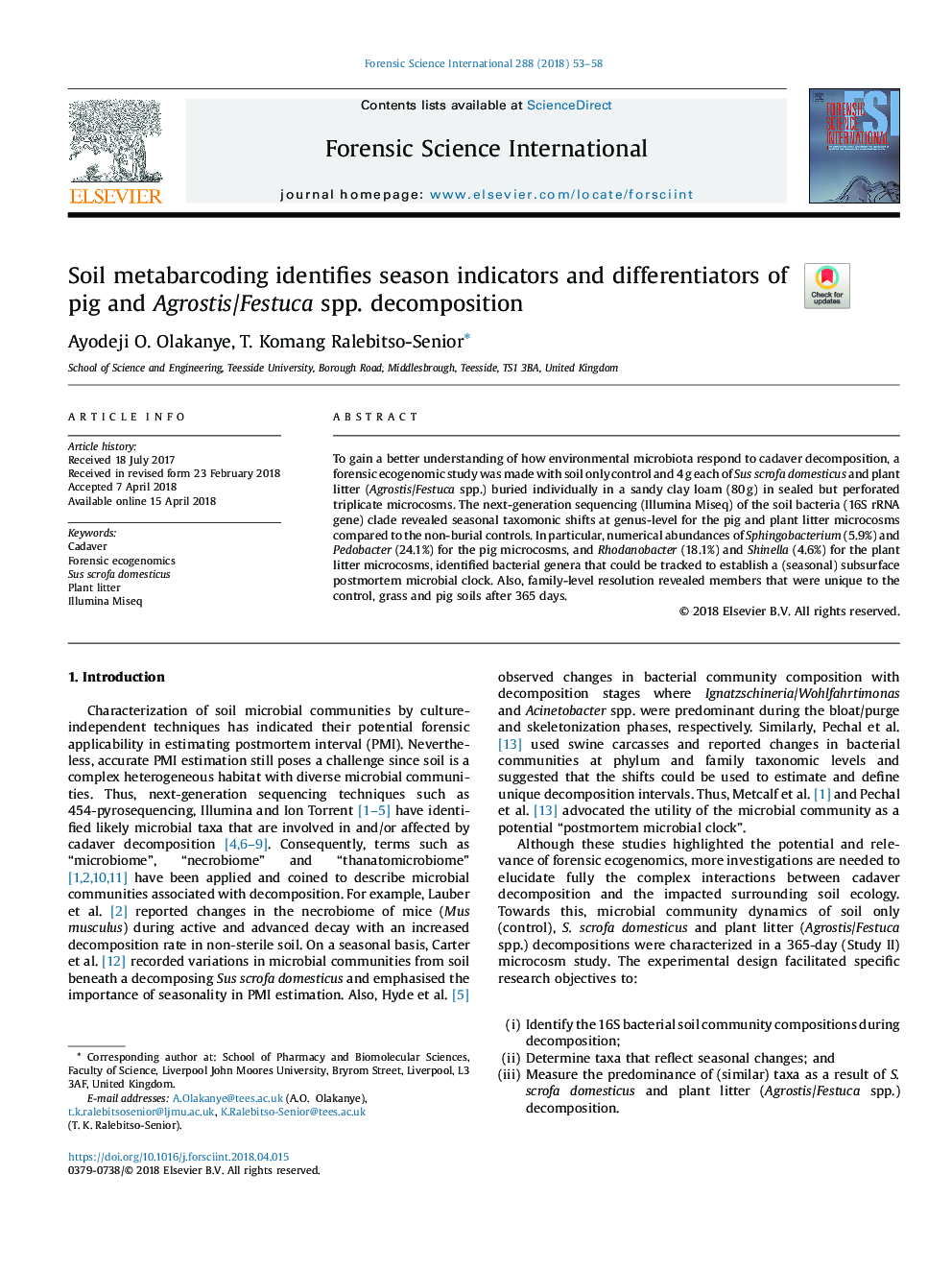| Article ID | Journal | Published Year | Pages | File Type |
|---|---|---|---|---|
| 6550914 | Forensic Science International | 2018 | 6 Pages |
Abstract
To gain a better understanding of how environmental microbiota respond to cadaver decomposition, a forensic ecogenomic study was made with soil only control and 4Â g each of Sus scrofa domesticus and plant litter (Agrostis/Festuca spp.) buried individually in a sandy clay loam (80Â g) in sealed but perforated triplicate microcosms. The next-generation sequencing (Illumina Miseq) of the soil bacteria (16S rRNA gene) clade revealed seasonal taxomonic shifts at genus-level for the pig and plant litter microcosms compared to the non-burial controls. In particular, numerical abundances of Sphingobacterium (5.9%) and Pedobacter (24.1%) for the pig microcosms, and Rhodanobacter (18.1%) and Shinella (4.6%) for the plant litter microcosms, identified bacterial genera that could be tracked to establish a (seasonal) subsurface postmortem microbial clock. Also, family-level resolution revealed members that were unique to the control, grass and pig soils after 365 days.
Related Topics
Physical Sciences and Engineering
Chemistry
Analytical Chemistry
Authors
Ayodeji O. Olakanye, T. Komang Ralebitso-Senior,
